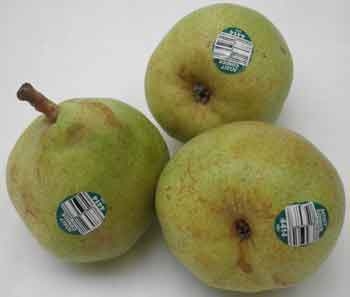Early spring can be an invigorating time of year, with lengthening days, blooming daffodils and fruit trees (and ski season still in full force). One of the best perks of the season is the availability of luscious strawberries, and tasty artichokes and asparagus picked from nearby farms, with flavor quality and price that reflects both in-season and local transportation benefits.

Elsewhere in the United States “local” food markets are much less developed due to climate restrictions that limit production to a brief period in the summer and early fall; and the variety of products grown is only a fraction of the over 200 crops grown in California. While “local” production represents a rapidly growing share of U.S. agricultural sales, with direct-to-consumer sales more than quadrupling in the past decade, outside of California the share is still tiny.
There are few things as disappointing as biting into a piece of fruit that looks beautiful on the outside but just doesn’t deliver that burst of flavor, or cutting into a nice-looking vegetable only to find an unsightly defect inside. When I’m prowling through a display of fresh produce, I rev up all my senses into high gear and get up-close and personal with the fruit and veggie items on my list. I get busy feeling the weight-to-size ratio, gently (not too hard, mind you, or you’ll get a bad reputation with other shoppers) pressing to feel for firmness, looking at color, form, and stem separation area, and smelling the aroma. All of these things, and more, help provide clues about the quality inside.

Other clues are often available about where and how your produce items were grown. For instance, in 2009 rules (affecting retail grocers) were adopted by the USDA mandating country of origin labeling (COOL), which required that retailers notify customers of the country of origin of all perishable agricultural commodities. Also offering insights into your produce selection is the Price Look Up sticker. Created by the Produce Marketing Association (PMA) in 1987 to create a standardized system to assist check-out clerks with looking up the produce items, it also indicates additional information such as whether it’s organic.
For instance, if your produce item’s sticker has a 4 digit code, it is “conventionally grown, but not organic.” If the code has 5 digits, and the first digit is a 9, the produce was organically grown. Usually the PLU stickers also include the country of origin in writing, but if not, this information should be displayed on the packing box or other store signage. Conventionally grown produce is recognized by scientists and regulators to be just as safe as organically grown and there is no evidence that it is worse for the environment. About 95 percent of retail fresh produce sales are conventionally grown and generally cost about 30 percent less than organics.
There are a number of resources that can help produce shoppers improve their savvy shopping skills:
From the Farm to Your Table: A Consumer’s Guide to Fresh Fruits and Vegetables, by James Thompson and Adel Kader. This 16-page booklet offers information on measuring quality; farm-based growing conditions, practices and harvesting; handling, transportation and storage; and selecting and storing good-quality produce for use at home. The table on how to select good-quality produce is especially helpful. ($7.00/copy)
Shopping for Fruits & Vegetables at the Fruits and Veggies: More Matters web site
Storing Fresh Fruit and Vegetables for Better Taste, a free downloadable poster from the UC Davis Postharvest Technology Center
i know produce, a comprehensive produce website developed by the Produce Marketing Association (PMA) that includes photo identification, written description, availability by location, nutrition information, storage/handling, and tips.